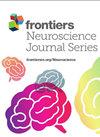The digital twin in neuroscience: from theory to tailored therapy
IF 3.2
3区 医学
Q2 NEUROSCIENCES
引用次数: 0
Abstract
Digital twins enable simulation, comprehensive analysis and predictions, as virtual representations of physical systems. They are also finding increasing interest and application in the healthcare sector, with a particular focus on digital twins of the brain. We discuss how digital twins in neuroscience enable the modeling of brain functions and pathology as they offer an in-silico approach to studying the brain and illustrating the complex relationships between brain network dynamics and related functions. To showcase the capabilities of digital twinning in neuroscience we demonstrate how the impact of brain tumors on the brain’s physical structures and functioning can be modeled in relation to the philosophical concept of plasticity. Against this technically derived backdrop, which assumes that the brain’s nonlinear behavior toward improvement and repair can be modeled and predicted based on MRI data, we further explore the philosophical insights of Catherine Malabou. Malabou emphasizes the brain’s dual capacity for adaptive and destructive plasticity. We will discuss in how far Malabou’s ideas provide a more holistic theoretical framework for understanding how digital twins can model the brain’s response to injury and pathology, embracing Malabou’s concept of both adaptive and destructive plasticity which provides a framework to address such yet incomputable aspects of neuroscience and the sometimes seemingly unfavorable dynamics of neuroplasticity helping to bridge the gap between theoretical research and clinical practice.神经科学中的数字孪生:从理论到定制疗法
数字孪生作为物理系统的虚拟代表,能够进行模拟、综合分析和预测。在医疗保健领域,数字孪生也受到越来越多的关注和应用,尤其是大脑数字孪生。我们将讨论神经科学中的数字孪生如何实现大脑功能和病理建模,因为它们提供了一种研究大脑和说明大脑网络动力学与相关功能之间复杂关系的室内方法。为了展示数字孪生在神经科学中的功能,我们展示了如何根据可塑性的哲学概念来模拟脑肿瘤对大脑物理结构和功能的影响。在此技术背景下,我们进一步探讨了凯瑟琳-马拉博(Catherine Malabou)的哲学见解。马拉博强调大脑具有适应性和破坏性可塑性的双重能力。我们将讨论马拉博的观点在多大程度上为理解数字双胞胎如何模拟大脑对损伤和病理的反应提供了一个更全面的理论框架,马拉博的适应性和破坏性可塑性概念为解决神经科学中难以计算的方面以及神经可塑性有时看似不利的动态提供了一个框架,有助于弥合理论研究与临床实践之间的差距。
本文章由计算机程序翻译,如有差异,请以英文原文为准。
求助全文
约1分钟内获得全文
求助全文
来源期刊

Frontiers in Neuroscience
NEUROSCIENCES-
CiteScore
6.20
自引率
4.70%
发文量
2070
审稿时长
14 weeks
期刊介绍:
Neural Technology is devoted to the convergence between neurobiology and quantum-, nano- and micro-sciences. In our vision, this interdisciplinary approach should go beyond the technological development of sophisticated methods and should contribute in generating a genuine change in our discipline.
 求助内容:
求助内容: 应助结果提醒方式:
应助结果提醒方式:


